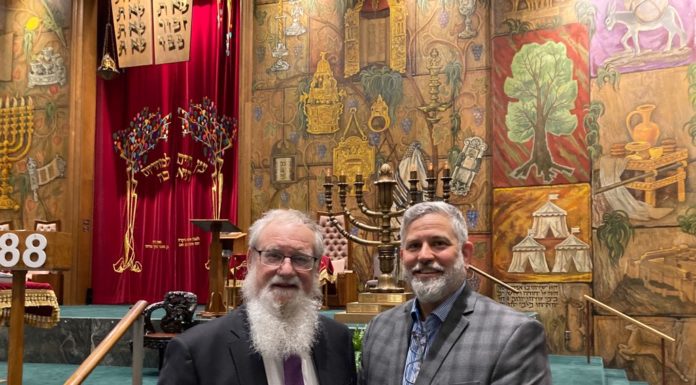When, a number of years ago, my dear father, z”l, showed me his new “shofar shoes,” I was reminded of how uniquely Jews steeped in Yiddishkeit look at the world.
It was several hours before the arrival of Yom Kippur. My family and I had the wonderful privilege of spending the Yomim Nora’im in Baltimore with my father and his wife, Ethel Bagry Shafran, a”h (my wonderful “second mother,” as I referred to her; I lost my own beloved mother, a”h, many years earlier). My father was the rov of a small shul and served as the mazkir of Baltimore’s widely respected Orthodox rabbinic court.
Before he showed me the shoes, he recounted how his old cloth “Yom Kippur shoes” had worn out and grown uncomfortable. These new “shofar shoes,” however, he explained, were much better.
He was someone, without question, who could appreciate a good shoe. As a child in a Polish shtetl, the only shoes he ever had were those first worn and outgrown by older siblings. He attributed his size 6EEE feet to the confining, ill-fitting footwear of his youth. And during the years of World War II, when he and his fellow Novardoker bnei yeshivah found themselves unwilling guests of Stalin in a Siberian labor camp, the frigid temperatures made foot-covering a matter not of comfort but of life or death.
He recalled how he and his friends would wrap long pieces of cloth in layers around their feet for insulation. When he said the morning brachah “She’asah li kol tzorki,” “Who has provided me all my needs,” which particularly refers to being provided with shoes, he surely related to it more viscerally than most of us do.
My father richly appreciated so many other things too. He never took having a roof over his head, or heat in the winter or clothing or freedom for granted. Deprivation is an efficient teacher of truth.
And he took powerful pride in his children and grandchildren. None of them is particularly “successful” in the world’s gauge of the word, in the acquisition of wealth or property. No dot-com millionaires (current or ex) among his progeny. But they are all, to a person, observant Jews, immersed in Torah and mitzvos.
And my father was confident that, with Hashem’s help, the great-grandchildren with which he was blessed—and, with Hashem’s help, those who would follow (and many, baruch Hashem, have)—will grow up in dedicatedly Jewish homes. That, he insisted—not what the world thinks—is true success, Jewish success.
So many things, I pondered, are so different when regarded through deeply Jewish eyes. Even what a New Year’s day means. To the wider world, January 1 is a day of partying and revelry, an opportunity to get drunk and have a good time. Rosh Hashanah, by contrast, is a time of judgment—a time of happiness, to be sure, but of trepidation as well, of regret, of apologies, of repentance.
My father blew the shofar at his shul for more than 50 Rosh Hashanahs, calling all who heard, in the Rambam’s famous words, to “awaken, sleepers, from your slumber,” to reject the “silly distractions of the temporal world” we occupy; to focus on what alone is real: serving our Creator and being good to one another. In other words, to see the world through Jewish eyes. No wonder my father was so happy to discover that the comfortable Yom Kippur shoes he had found were… “shofar shoes.”
I didn’t understand at first what a “shofar shoe” could be, though, and told him so. He smiled and replied patiently, “Why, each one has a shofar on it.”
When I looked puzzled, he went to his bedroom and emerged triumphantly with the footwear.
And when he held them up for me to see, his Jewish eyes taught mine a lesson.
Since that moment, I have never been able to look at the Nike “swoosh” quite the same way as I had before.





















